After starting his career in his native Norway, Fredrik Aursnes finally made the jump to a bigger league last summer, joining Eredivisie giants Feyenoord from Norwegian side Molde. A spectacular first season with Feyenoord followed, with Aursnes playing a huge part in helping the Rotterdam-based side finish third in the Eredivisie behind PSV Eindhoven and champions Ajax, as well as reaching the UEFA Europa Conference League final before losing out to Jose Mourinho’s AS Roma.
This tactical analysis and scout report piece will take a more in-depth look into the strengths of Fredrik Aursnes, which will give a better idea as to why SL Benfica and new manager Roger Schmidt are debating spending around €15 million on the Feyenoord midfielder.
Player profile
Under former AZ Alkmaar boss Arne Slot, Feyenoord last season played a typical Dutch footballing system, a 4-3-3. Aursnes was tasked with being at the base of that midfield three, protecting the back four, while also dictating play from these deeper-lying positions.
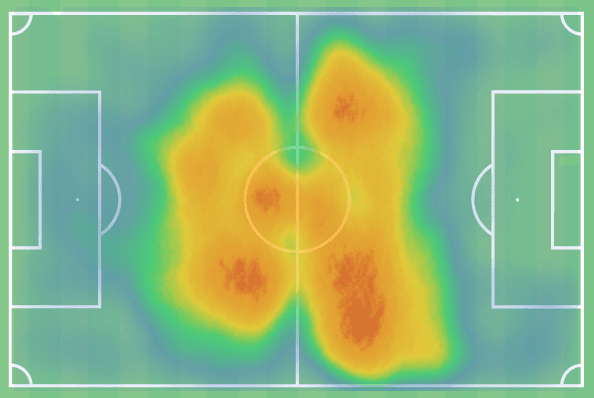
As Aursnes’s heat map from last season demonstrates, he was the main man that kept Feyenoord’s team together. Aursnes only missed one game in the previous campaign (due to a yellow card suspension), with Feyenoord subsequently losing that match. Aursnes controlled the game in these midfield areas for Feyenoord last campaign, proving his worth to the side, as well as the manager. Losing Aursnes this summer would be a big blow for Slot and a huge hole for him to fill in his midfield as well.
Dictating play from deep
Without a doubt, Fredrik Aursnes’s biggest strength is his distribution on the ball. Aursnes attempted a staggering 65.75 passes per 90 last season for Feyenoord, with an accuracy of 85.6%. While some may think this number could be slightly inflated because of the amount of backward passes he played, they would be mistaken. The Norwegian midfielder played 22.12 forward passes per 90 with an accuracy of 73.8%. He also played 11.71 passes to the final third per 90 with a success rate of 77.8%, a statistic which shows Aursnes’s ability to dictate play as well as create chances from these deeper lying midfield positions. His long passing ability also shone last season, with 6.27 long passes played per 90 with 53.7% accuracy.
The following are some examples of the quality that Aursnes possesses while on the ball:
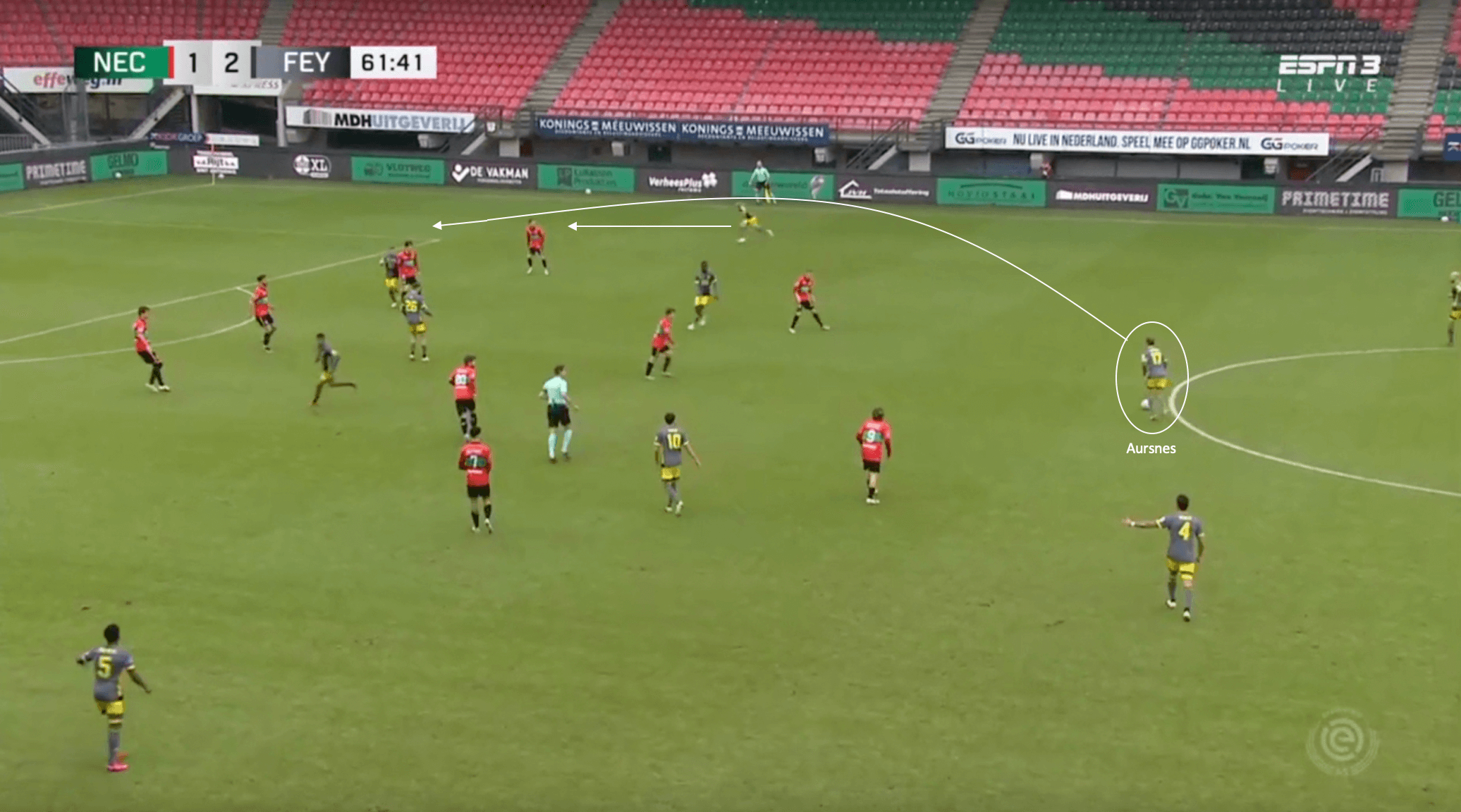
The image above shows an example of Aursnes’s distribution from deeper lying positions. The Norwegian is the deepest of the three central midfielders, and he is in possession looking for passing options. NEC are sitting in a deep defensive block, making ground passes into the middle nearly impossible. With no pressure on Aursnes due to this deep defending from the opposition, he is able to take his time and spot the fullback making a run in behind the defence. Aursnes plays a perfectly weighted pass over the top of the opposition defence, with the fullback able to get onto the end of it before sending a cross into the box towards the penalty spot.
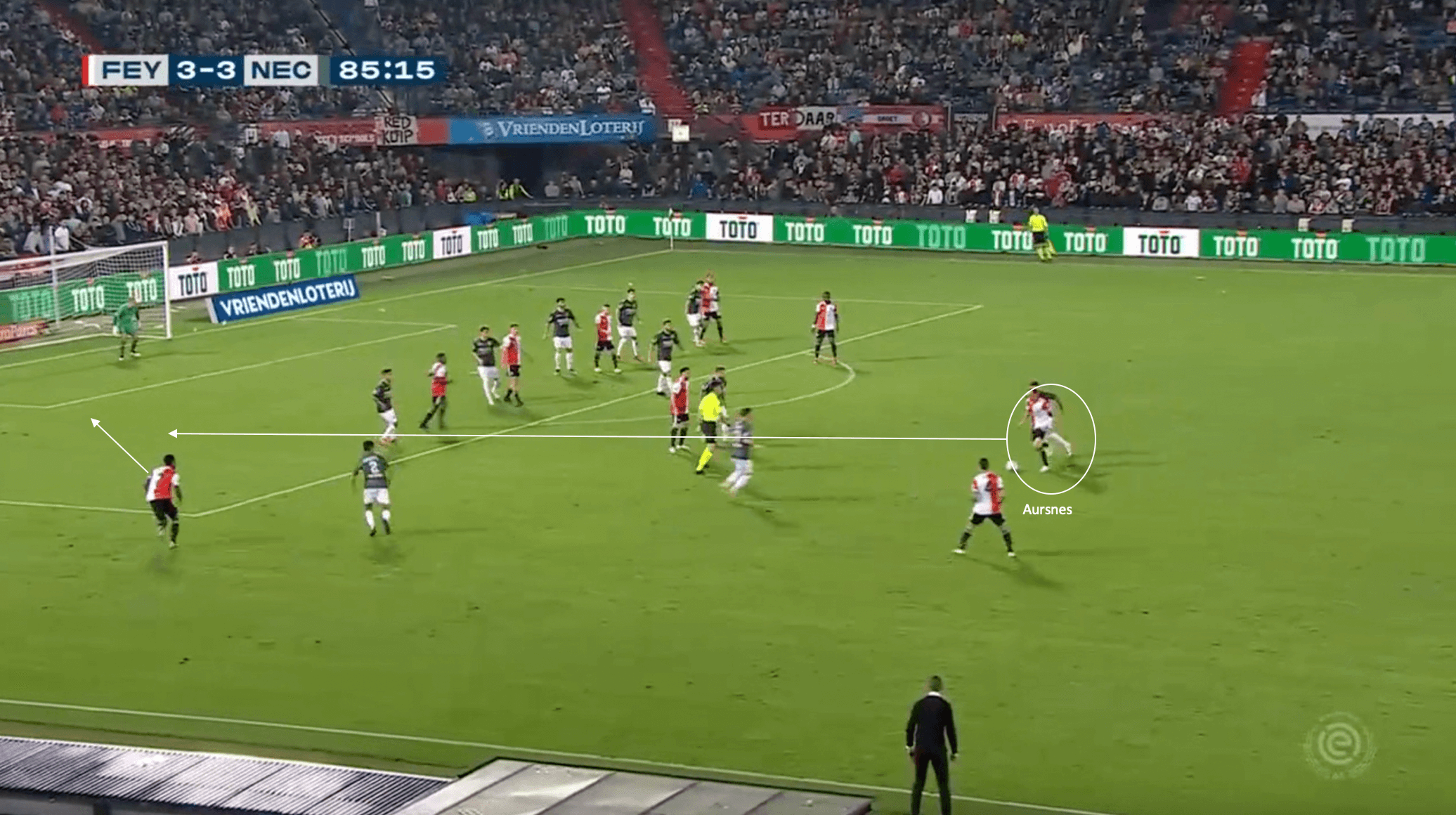
Aursnes also has the ability to directly create chances for teammates in the attacking third, he is not just a midfielder that will sit deep playing long balls. The phase of play above shows an example of this. Aursnes receives possession from an advanced teammate and decides to take on his marker, getting past him with relative ease. He notices the run of Luis Sinisterra and is able to play an outside of the right foot through-ball into Sinisterra’s path, taking the entire opposition side out of the play with one pass. Unfortunately, Sinisterra takes a poor first touch, which allows the fullback the opportunity to get back and clear the ball out for a corner.
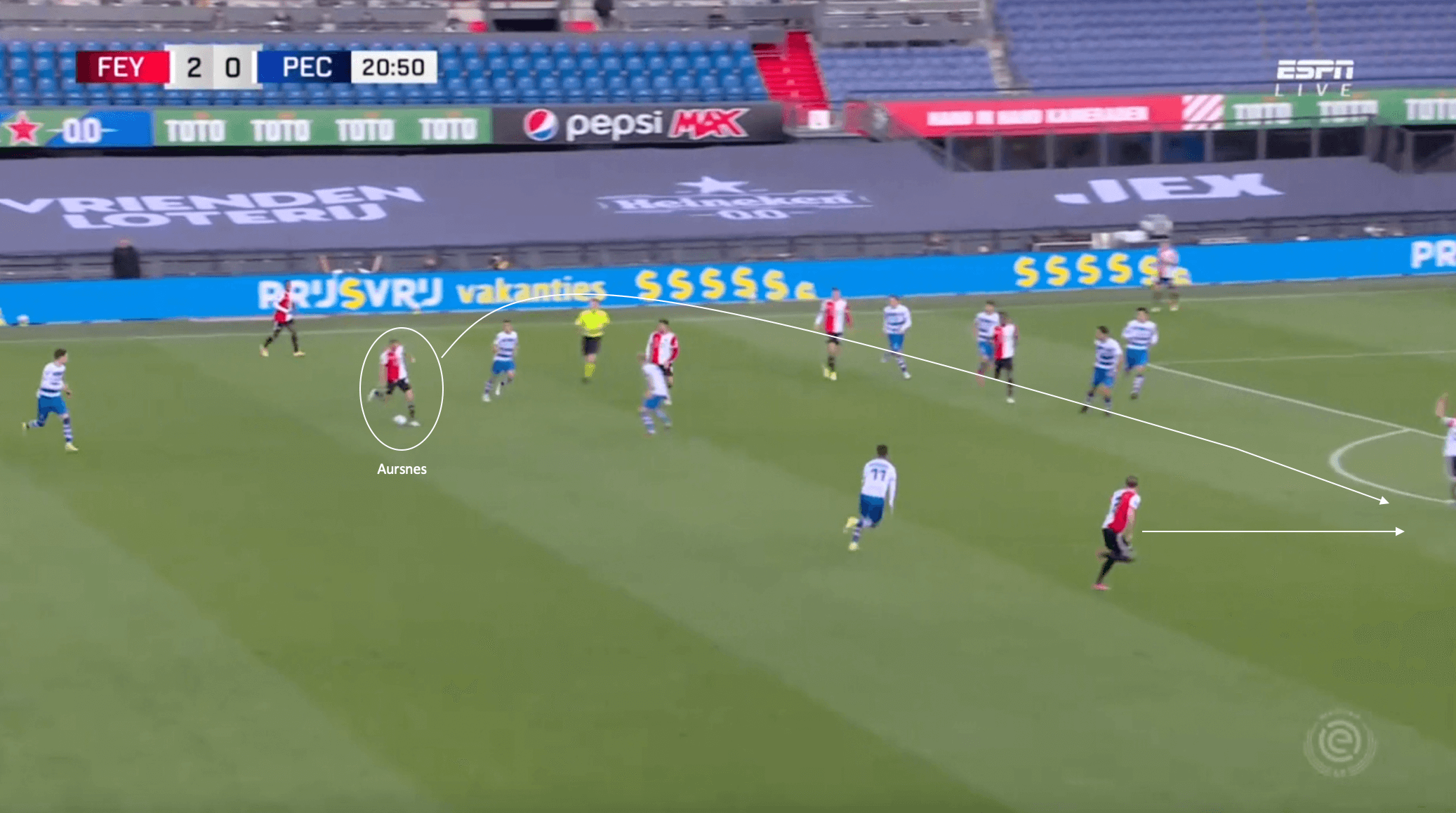
Another example of Aursnes’s vision and passing ability is shown above. Preceding this phase of play, Feyenoord turned the ball over in the attacking third before quickly regaining possession. The ball is played to Aursnes, who has found himself in a pocket of space. He notices the advanced run of the fullback and is able to drop the ball into the space behind the PEC Zwolle defence.
This ability of Aursnes to drop the ball into these pockets of space shows the value that he offers to this Feyenoord team. He is able to control the play for the Eredivisie side, whether he is in the attacking third, middle third, or even his own defensive third.
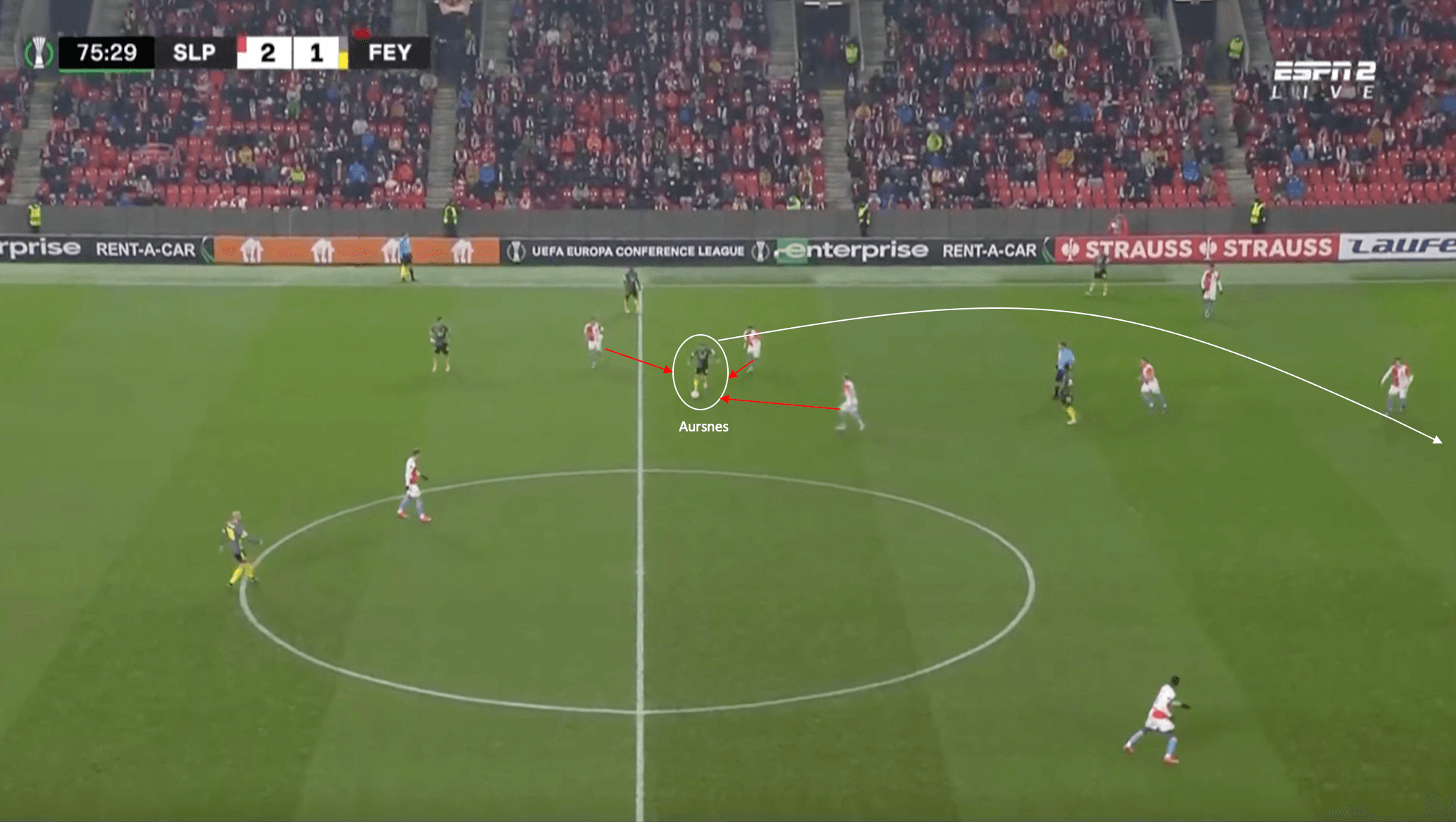
The final example for this section shows Aursnes’s ability to dictate play and be one of Feyenoord’s main sources of ball progression to the attacking third when under pressure. The Norwegian is once again the deepest midfielder for Feyenoord, looking to control the play and link the defence to the attack. After receiving the ball, he is almost instantly closed down by three Slavia Prague players. After gathering possession, Aursnes only has to quickly look up once before playing a ball over the top and into the run of the striker. Unfortunately, the ball is miscontrolled and the striker loses possession.
This section has been able to demonstrate the role that Fredrik Aursnes plays in controlling the movement of the play through the Feyenoord midfield, essentially linking the defence and attack. He plays a similar role to players like Joshua Kimmich at Bayern Munich or Thiago at Liverpool. During his time with PSV, Roger Schmidt had Ibrahim Sangaré and Erick Gutiérrez, two players with a similar style of distribution qualities of Aursnes. After having been able to keep a close eye on Aursnes last season, it is no surprise Schmidt is interested in adding him to his Benfica squad.
Defensive positioning
As we mentioned earlier in this piece, Fredrik Aursnes is a controlling presence in Feyenoord’s midfield that is able to link up play between the defence and the attack. However, Aursnes is also tasked with being the man to protect the back four when the opposition are attacking. The Norwegian’s defensive positioning is important, especially during an opposition counterattack. This section will look at a few examples of Aursnes’s defensive orientation during these phases of play.
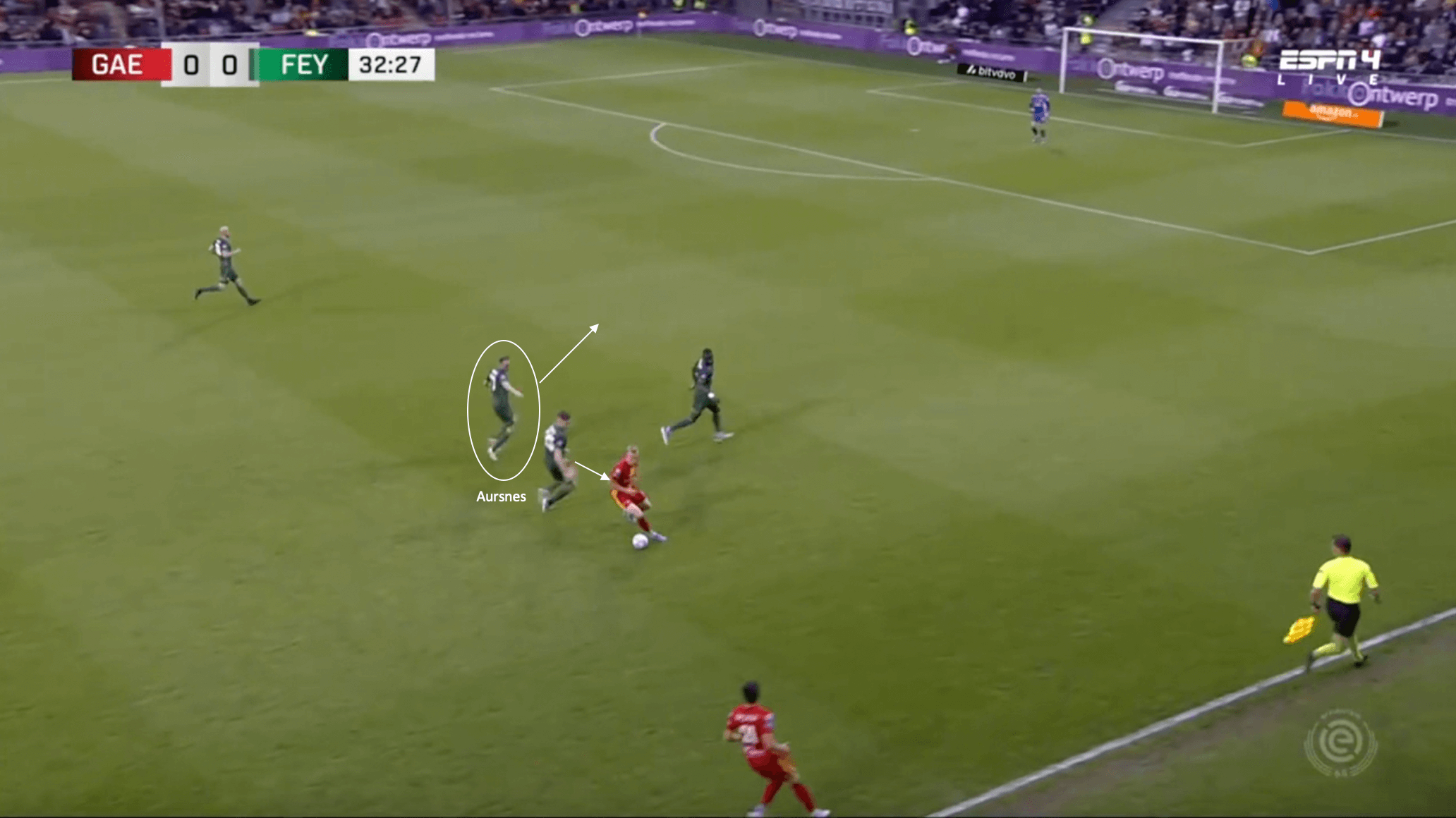
The image above shows an example of the defensive positioning, as well as the work rate that Aursnes has. After Feyenoord turned over possession in the middle third, they were forced to defend against a counterattacking phase of play. Aursnes instructs the defender to step out and engage the player in possession, while he drops into the backline and becomes a makeshift centre-back. This allows Feyenoord to keep their defensive solidity while still pressing the ball-carrier stop the counterattack threat.
What’s also not shown is the recovery speed that Aursnes had in order to get back into position in time while also instructing the defence in this phase of play.
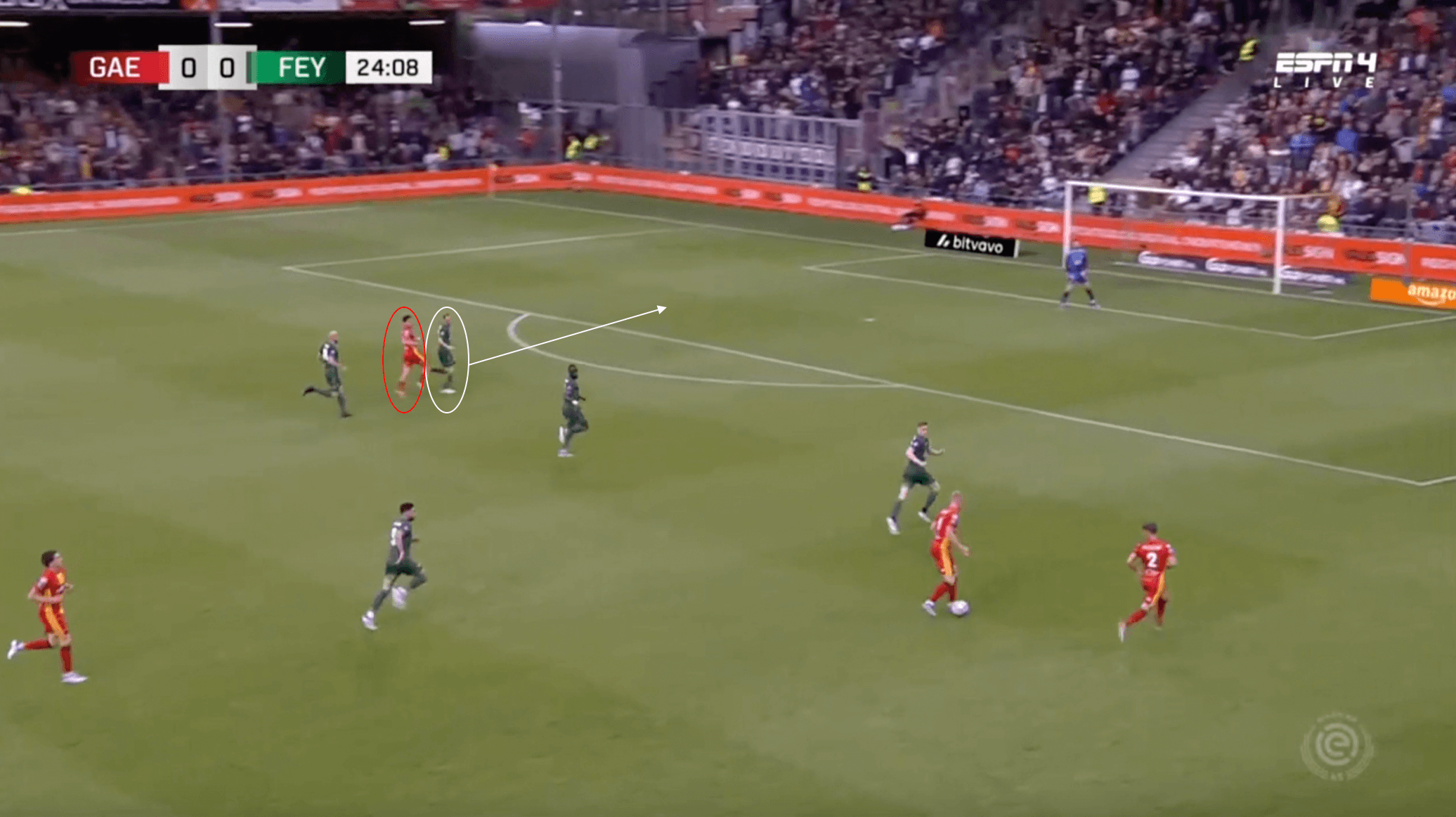
The image above shows another example of Aursnes’s defensive positioning. After Feyenoord lose possession in the middle third, Aursnes is tasked with marking the attacker on the far side. He is able to use his recovery speed to be able to keep up with the attacker, staying in front of him to block his run. The attacker then trips, which allows Aursnes to take up his defensive position as part of a back five for the time being.
Most times during transitional defensive moments for Feyenoord, Aursnes takes his place as an extra centre-back, giving the side more defensive solidity in the penalty area when the opposition are throwing players forward in attacking sequences.
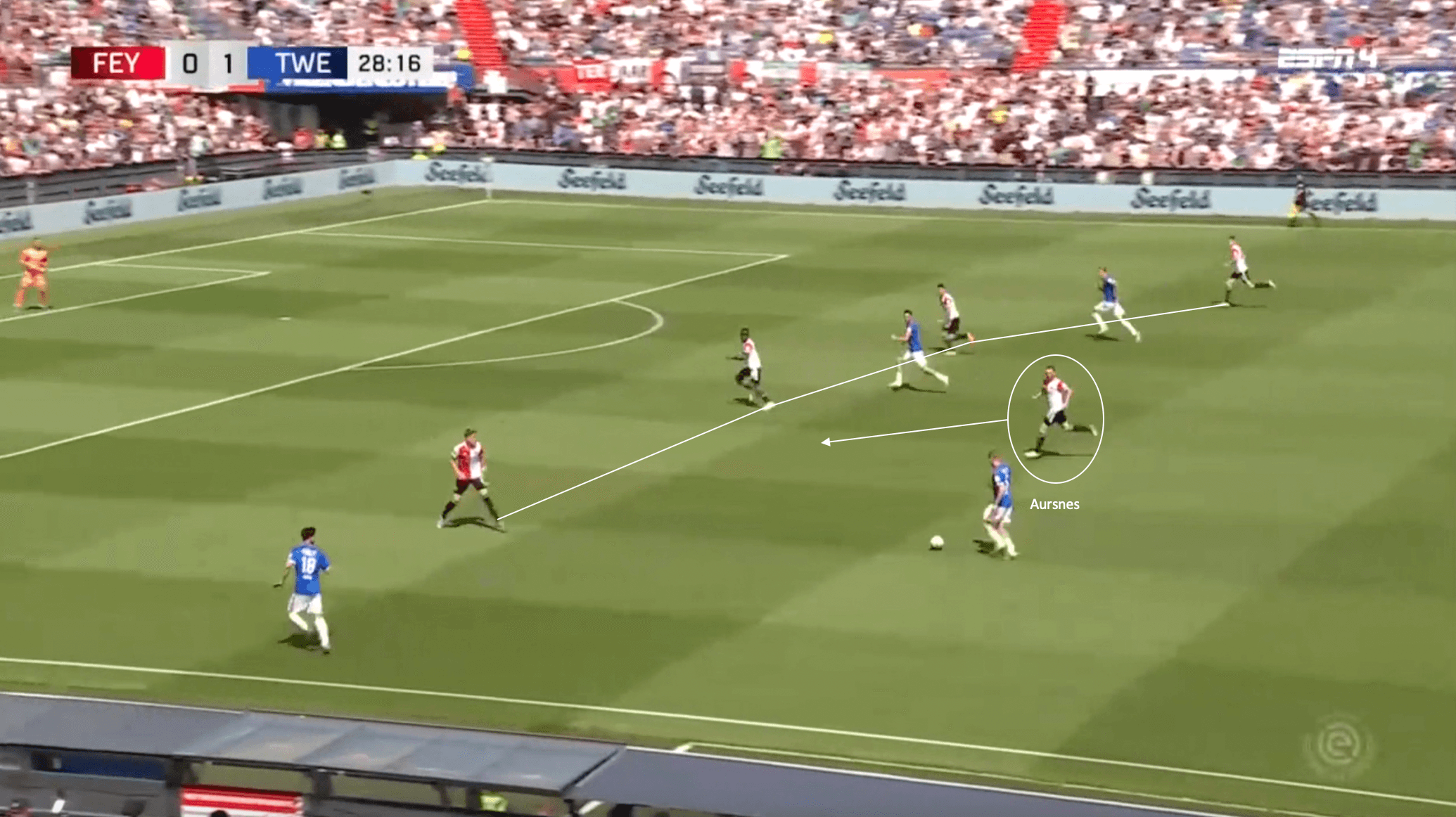
Above shows the usual position that Aursnes takes up defensively, as the shield of the back four when the opposition are building up play. As the image above shows, the back four for Feyenoord have maintained compactness and are in a relatively straight line, with no worries of defenders keeping attackers onside in more advanced positions.
The Norwegian’s job is to try and cover the passing lanes and spaces that could be exploited between the midfield and defensive lines. He does his task well here, as he is able to slowly close down the Twente player in possession and force a pass wide to the attacker on the near touchline.
What’s not shown is the defensive position that Aursnes takes up when the ball is played wide. The fullback moves to engage with the receiver as Aursnes takes up a new position as the defacto right-back to keep the defensive shape and prevent an opposition player from running unmarked in behind the Feyenoord defence.
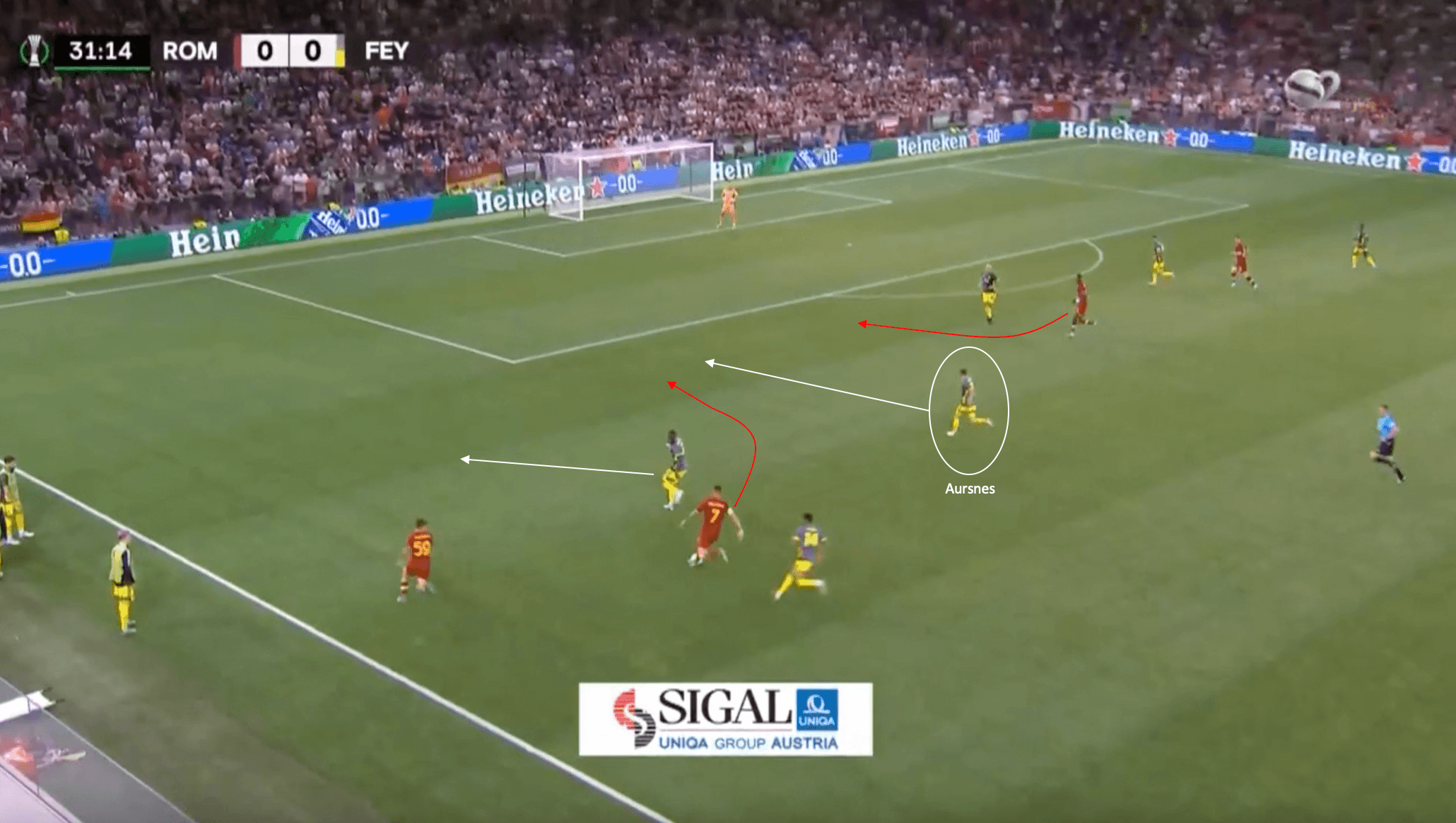
The image above shows another example of the defensive positioning of Fredrik Aursnes, this time from the UEFA Europa Conference League final against Jose Mourinho’s AS Roma. Roma are currently counterattacking, with the Feyenoord defence attempting to quickly get back into their defensive shape. Lorenzo Pellegrini plays the ball wide to Nicola Zalewski, which triggers the fullback to move out of position and engage with Zalewski. Aursnes notices this and quickly moves into the space left vacant by the fullback, which prevents either Pellegrini or Tammy Abraham from making runs unmarked behind the Feyenoord defence.
This section shows another reason why Roger Schmidt is so keen to secure the services of Aursnes for his Benfica side. It will be another tough season for Benfica, challenging the likes of Porto and Sporting for the Portuguese league title but having a defensive midfielder like Aursnes may go a long way to helping As Aguias to try and secure another league crown.
Conclusion
This tactics and analysis piece has shown a couple of Fredrik Aursnes’s biggest strengths, with him being a key reason for Feyenoord’s third-placed league finish last season, as well as their run to the Europa Conference League final. Aursnes has gone from playing under former Manchester United manager Ole Gunnar Solskjær at Molde to now possibly playing for one of the best sides in Portugal. Arne Slot and Feyenoord will be extremely relieved if their rock in midfield stays in Rotterdam for this upcoming season.





Comments